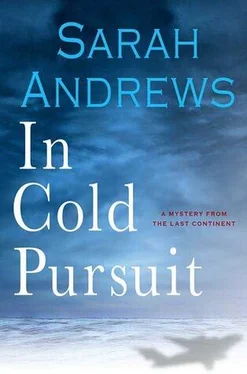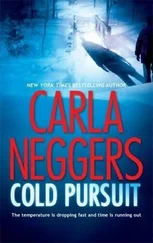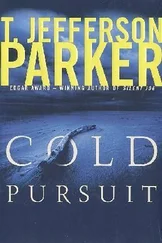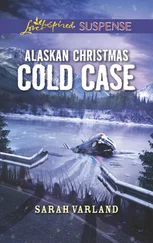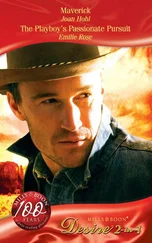“I suppose not.”
“Then you suppose right. Look up there. That’s all we got between us and Black Island Station.” He pointed at the array of antennae on top of the building that housed Mac Ops and the Airlift Wing. “Black Island’s got the big satellite dish, but it’s there for telecommunications, not radio, and it ain’t looking south.”
“Where is it looking?”
Hilario rolled his eyes. “It’s pointed north. It looks at a geostationary satellite over the equator. Damn thing is tipped up within four degrees of standing on its edge to see it. So you can do the math. It’s seventy-eight degrees south latitude, looking how many thousand miles north—that puts that satellite up pretty high, eh? Like, so the dish can see it over the curve of the earth?”
“Doing trigonometry in my head has never been my forte.”
Wee Willy had by this time finally made a match between his key fob and a snow machine number, had balled up the canvas covering on his machine and stuffed it into the wooden box mounted toward the back, leaving bungee cords dangling near the tread, and was having trouble getting it started. He cranked the ignition, hammered on the throttle, then stopped, waited a moment, kicked the machine, then repeated the whole routine, as if he could beat it into submission.
Dave sat adjusting his gear box, paying no attention to Wee Willy.
Edith opened the door to the cab of the Challenger and shouted, “Hey! You ever heard of the primer and choke, or what?”
Wee Willy shot her a scowl.
Edith hoisted herself out of the driver’s seat and started down the steps toward her colleague. She closed the distance between her vehicle and his, pushed him out of her way with one hip, set the primer and the choke, gave the starter a switch and a yank, gave the throttle a couple of pumps, held it until the machine revved nice and high, adjusted the choke, and then stepped back and waited.
Wee Willy gave no outward evidence of noticing that Edith had assisted him. He settled himself back on the saddle like a load of turnips and pulled up his hood. As an after-thought, he pushed his hood back again, dug at the throat of his parka until he found his neck gaiter and pulled it up to the bottom of his nose, pulled his goggles down to meet it, then pulled his hood over the top of the elastic. He took off his gloves to accomplish this, dropping both on the ice. The wind caught one and blew it five feet away. Wee Willy climbed off his machine, galumphed after it, slipped and almost fell in the process of picking it up, then at last caught it and put it on, stuffing the cuff under the cuff of his parka.
“This is going to be a long trip,” said Hilario.
Edith had headed back to the Challenger. As she placed her foot on the bottom step and started to raise the other, she slipped and took a tumble off onto the ice.
Dave instantly hopped off his idling snow machine and rushed to help her up. “You okay? You scared me, Edith. We don’t need any more accidents around here.”
Edith brushed snow off her Carhartts. “It’s just like the Boss said. These bottom steps are all crammed with ice. He warned us about this in the safety meeting at the beginning of the season.” Edith headed back up the steps, placing her feet with greater care.
Dave moved in and kicked the steps free of ice, then turned and strolled back to his waiting snow machine.
“But both she and Dave came down without slipping,” Valena said, to no one in particular.
Hilario said, “She gets to rushing sometimes. Buckin’ for pro-mo-tion,” he said, singing the last word.
The Challenger, dragging the trail-grooming bar called the goose, swung out ahead of them and headed down the flag route that led out toward the ice runway. A snow machine shot out on either side of it, kicking up loose snow. Hilario swung in line behind them. They were off.
HILARIO LOOKED TO VALENA’S EDUCATION AS A DELTA driver. “Watch and learn,” he said, pushing the mammoth snow-crawler into higher gear. “You gonna be driving this thing in less than an hour.” They began to roll faster. “This baby’s got five forward gears, automatic shift. You can start it out set in high gear and it’ll shift itself up there as it goes, or start in a lower gear and shift up when you’re ready, but you always got to downshift by hand, except you don’t have to work no clutch. Cardinal rule, don’t let it break traction. You feel the thing beginning to labor, or hear the engine speed slow, you downshift like this,” he said, demonstrating with an easy tug of the shift lever.
“Seems simple enough.”
“Don’t get overconfident. Pay attention all times.”
“Check.”
“Don’t go off the trail. That Challenger’s got treads, you got tires. With this load, you weigh fifteen tons. Especially don’t go off the trail here.” He pointed to the trail ahead of them, where it choked down to a narrows that led between two clusters of flags. Many of the flags were black.
“Big crack in the ice or something?”
“This is where the fuel lines cross from the island out to the ice runway. Don’t go outside this slot or you gonna make yourself very unpopular round here.” They rode up over a concealed bridge and down the other side. The route widened out again. “Okay, now here we got four lanes, closest thing to an Interstate highway on this whole continent. Outer two lanes are for tracked vehicles, inner two are rubber tires, that’s us.”
Training continued as they took a left at the first fork in the route, toward Williams Field—”Willy, they call it; it’s named after this dude who drove a Cat through the ice over by Cape Evans,” Hilario explained—then turned right a mile or two later, heading south toward Pegasus. “The third runway,” said Hilario, “is for landing C-17s after the sea ice gets too soft to take the weight. We gotta resurface it every year, and it’s farther from town, so we use the sea ice as long as we can.”
The flagged trail dropped from four lanes to two. Finally, the turn to Pegasus swung off to the right, the route dropped to one lane, and they were on the Black Island route.
“Nothing beyond here but ice,” said Hilario. “That flagged route to pole heads off down here. That’s it. Nothing else. No man’s land.”
They moved at ten miles per hour. The Challenger ground along ahead of them, carving through snowdrifts, smoothing and compacting the trail. They had now left what Antarctica had in the way of civilization, and the human universe shrank quickly in contrast to the immensity of the ice on which they traveled. As they rode along, Hilario and Valena chatted sporadically, swapping unimportant facts about themselves, such as favorite foods and things to do in leisure time, and commenting on the variations in the crests and hollows the wind had carved into the hard-packed snow that shrouded the ice. Finally, Hilario said, “Time for you to start driving.”
“Where are we?” asked Valena, searching the raw, white scenery for familiar landmarks. Hut Point and McMurdo Station had disappeared behind a rise and clouds had gathered about the towering heights of the Transantarctic Mountains and Mount Erebus. Their world had been consumed by snow and ice.
He pointed to a black smear of ice-dappled volcanic rock in the distance. “That’s Black Island there, and that’s—”
“I mean are we still on the sea ice or are we coming up onto the ice shelf? I saw a map that put the boundary between the two out here somewhere.”
“Well, if you can’t see an edge, then there’s really no difference, now, is there?”
“Yes, there is. A huge difference. The one is ocean water that freezes and breaks up annually. The other is freshwater snow that refroze into ice thousands of miles from here and—”
Читать дальше
